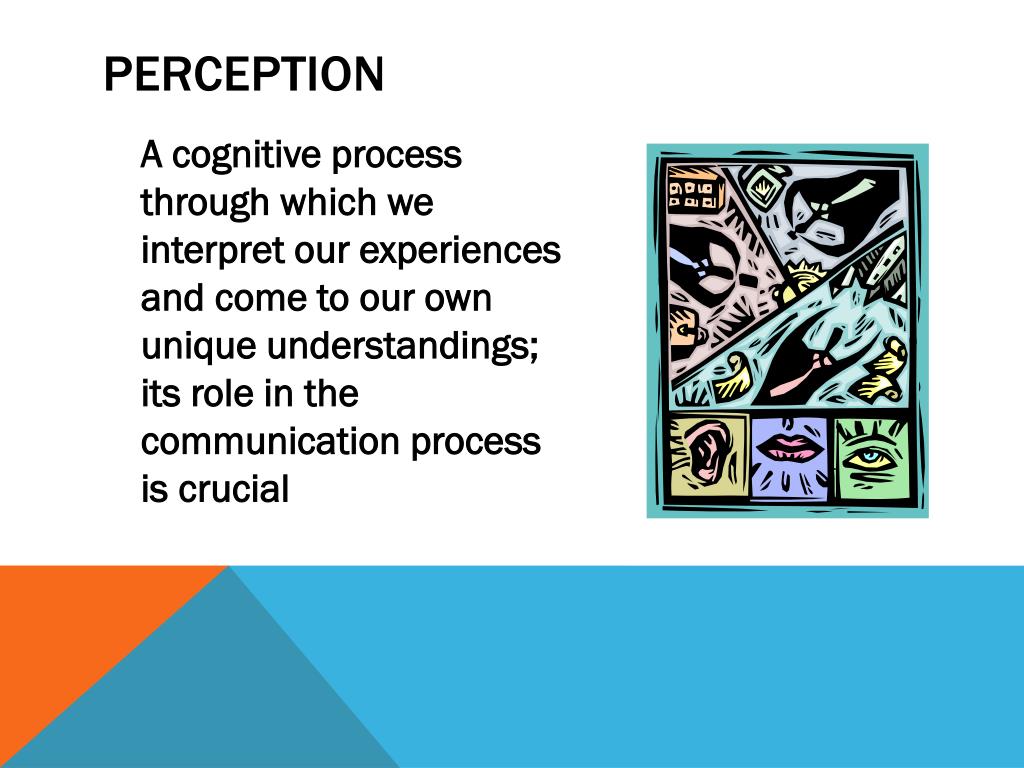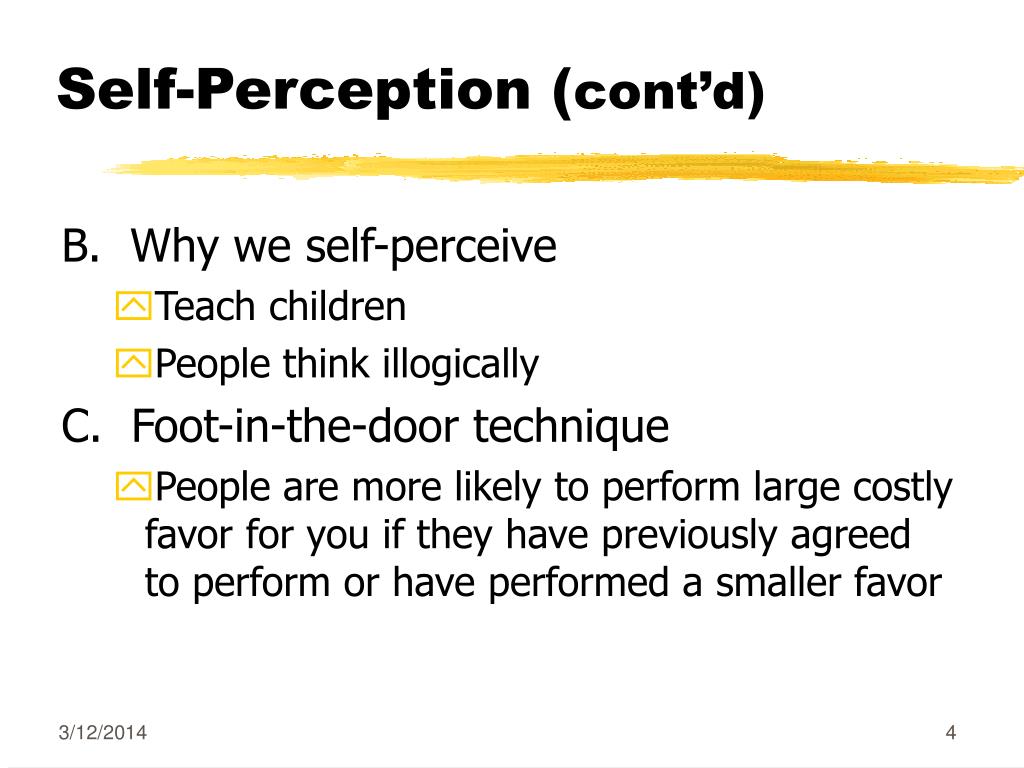

One area that often surfaces is confidence, an essential human element, which if missing, or if not present in adequate quantity, can make the difference between reaching or not reaching goals.

When I start a coaching engagement, I ask my coachee many questions to determine where best to focus. I’m a fan of the research the authors Katty Kay and Claire Shipman uncovered, and synthesized their findings in Why Confidence is Contagious. If it was good enough for the winningest soccer team, I figured it was a good resource for my clients. I learned that their coaches have the players read The Confidence Code: The Science and Art of Self-Assurance – What Women Should Know. Through my coaching and mentoring work, I’ve had the opportunity to meet members of the UNC Women’s Soccer team, the winningest women’s NCAAteam, having won 21 of the 41 national titles.
Self perception definition code#
Understanding self-perception theory can help individuals and practitioners develop strategies for fostering self-awareness, promoting positive behavior change, and enhancing well-being.Grace Ueng North Carolina Tar Heels Women’s Soccer and The Confidence Code Emotion regulation: Individuals may intentionally engage in certain behaviors to influence their own emotions, such as smiling to induce happiness or engaging in activities that evoke specific emotional states.Cognitive dissonance reduction: Self-perception theory offers an alternative explanation for cognitive dissonance, suggesting that individuals resolve inconsistencies between their attitudes and behaviors by altering their self-perceptions to align with their actions, rather than experiencing discomfort or tension.As a result, their intrinsic motivation may decrease, leading to reduced engagement or enjoyment of the activity once the reward is removed. Overjustification effect: When individuals receive external rewards for an activity they initially enjoyed, they may attribute their motivation to the reward, rather than their inherent interest in the activity.Some key implications and phenomena related to self-perception theory include:

Behavior has consequences: Actions that lead to significant outcomes or consequences are more likely to influence self-perception, as individuals are more attentive to the implications of such behaviors.Behavior is freely chosen: People are more likely to infer their preferences from actions that they believe they have chosen willingly, as opposed to actions that they feel were coerced or imposed.Internal cues are weak, ambiguous, or conflicting: When individuals are uncertain about their feelings or attitudes, they are more likely to rely on external information to form self-perceptions.Self-perception theory is especially relevant in situations where: This process is similar to how individuals make inferences about others’ internal states by observing their actions. Instead, they might draw conclusions about their own preferences or beliefs based on their behavior and the circumstances surrounding that behavior. The concept is grounded in social psychology and was first introduced by Daryl Bem in his influential 1967 paper, “Self-Perception: An Alternative Interpretation of Cognitive Dissonance Phenomena.”Īccording to the self-perception theory, individuals may not always have direct access to their inner feelings or motivations.

Self-perception is a psychological theory that posits that individuals infer their own attitudes, beliefs, emotions, and internal states by observing and interpreting their own behaviors and external cues.


 0 kommentar(er)
0 kommentar(er)
